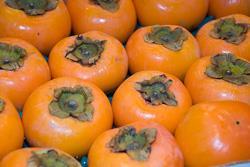
Following a recent visit by Chinese delegates, the New Zealand persimmon industry is now waiting for details to be finalised before the two countries can sign off on a protocol.
Persimmon Industry Council manager Ian Turk told Fruitnet.com that although the Chinese delegates had some concerns relating to orchard pest management, he expected access would be granted in the coming months.
New Zealand shares a Free Trade Agreement with China and access would be a welcome boost for the industry, he added.
“China has the potential to take a significant amount of the New Zealand crop. It’s a fruit that is already well known there and we can provide off-season fruit. Also, there is a considerable population of people there who can afford the prices we will be asking.”
While Mr Turk hopes to have the agreement finalised in the coming months, he said it is unlikely New Zealand will send any fruit to China until next year.
Currently New Zealand exports persimmons mainly to Asia and Australia, with the exception of Canada, which emerged as a market just five years ago.
Of these destinations Australia has over the past two seasons established itself as the most significant.
Last year New Zealand exported around 323,000 4kg boxes of fruit, with 106,000 boxes, representing 33 per cent of the export crop, sent across the Tasman to Australia. Other major export destinations were Thailand, which took 17 per cent of the export crop, Malaysia and Singapore, which both took 16 per cent and Hong Kong and Canada, which took 5 per cent each.
New Zealand persimmons have a pre-clearance arrangement with Australia. Australian Quarantine and Inspection Service (AQIS) officials inspect crops in New Zealand prior to export, said Mr Turk, which keeps the risks onshore.
While it is still early in the season, with the bulk of harvesting typically taking place in April and May, Mr Turk said the signs are production could be slightly down on last year.
Growing conditions have been difficult he added, with a dry start to summer giving way to heavy rains later in the season.



